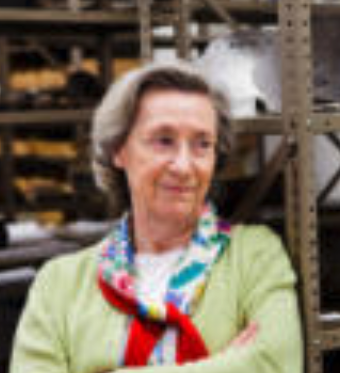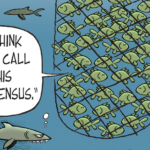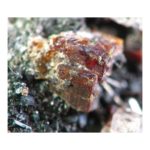Cite as: Benner, S. A. (2021) “The Importance of Chemistry in Astrobiology. Sandra Pizzarello”. Primordial Scoop, 2021, e1102. https://doi.org/10.52400/YQUF9286
Sandra Pizzarello passed away a few days ago, and we have lost one of our best examples of the importance of excellent organic chemistry when seeking to understand the cosmos. Her field was meteorites, and the organic molecules that they contain. While her contributions to this field are many, Sandra was especially important in work to understand a property of those molecules known as “chirality”.
Chirality is not a difficult property to understand, although organic chemistry courses that serve as gatekeepers for medical schools can make it seem so. In the three dimensional world, two objects are considered to be identical if they can be superimposed by a combination of two operations: (a) movement in space and (b) rotation in space. If one must also reflect one of the objects through a mirror plane to get superimposition, the objects are not identical.
For this reason, your left and right hands are not identical, even if we treat them as cartoon abstractions and ignore the small details, a scar on one or a scratch on the other. The cartoon versions can, however, be superimposed, provided that one of the hands is first reflected through a mirror plane. Thus, your hands are chiral, they are superimposable upon mirror reflection (which makes them called enantioners), and they are present in equal numbers, one to one.
A one to one ratio of chiral organic molecules is common in the abiological world as well. However, if we use a hypothetical microscope to go inside of your hand down to the scale of its molecular building blocks, we discover entire classes of molecule that are chiral and are present largely in one “hand”. For example, all chiral amino acids used in your translated proteins are “left handed”. All of the sugars in your DNA are “right handed”. And the common chirality, or homochirality, of collections of molecules is taken by some to be a “biosignature”.
For this reason, it became very important when Sandra asked whether chiral amino acids in meteorites are present in equal amounts, a one to one ratio. To answer such a question, it is necessary to look.
And so Sandra looked. Looking for enantiomeric enrichment in a sample of compounds is not easy. Enantiomers behave the same, except when they are in a chiral environment. Accordingly, one can pass a mixture of enantiomers across a solid matrix that is itself chiral. One enantiomer will move faster than the other, By integrating the amounts moving at each rate, one can estimate their ratio.
However, it is not so easy if the sample is complex. Here, a third compound might by accident move at the same rate on the matrix as one of the enantiomers. If one is not careful, that third compound will be counted together with one enantiomer of a target compound. That will lead to the mistaken conclusion that one of the enantiomers is more abundant than the other in a sample.
Such mistakes had actually been made in the field. But not by Sandra. Sandra understood the importance of precision in her work, and demonstrated it flawlessly. So when Sandra discovered enantiomeric excesses in some meteorites, everyone believed her. Her work remains the defining example of how abiological chirality can favor one enantiomer even in non-biologic materials. And this continues to be critical to our understanding of chirality as a biosignature.
It will also prove to be a key to understanding how homochirality arose as life originated. Here, Sandra and I were friendly competitors, with George Cooper, Art Weber, and others interested in the “sugar world”. It is interesting to note that this year the Nobel Prize in chemistry went to those who noticed that amines can catalyze reactions that give chiral products with one enantiomer enriched. Sandra was there also.
Even after Sandra retired, I would make a point of visiting her every time I was close to Tempe, going to lunch, visiting her museum, discussing the latest in origins research. My last time was just before the pandemic hit, where I had scheduled lunch with Sandra after climbing out of the Grand Canyon in February 2020. My old age and infirmity caused me to be a day late to come out from the canyon, where cell phones do not work. A mother as well as a brilliant scientist, Sandra worried with my secretary to ensure that I made it.
A lesson for the ages. Get the chemistry right, and significance will follow.




A very nice tribute to a true pioneer in the field of astrobiology, who applied the discipline of rigorous organic chemical analysis to the scrutiny of meteoritic samples, and set the standards required for current endeavours like the search for organics/life on Mars and the icy moons of the outer planets.